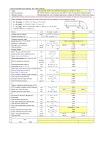WHY IS PIPING ENGINEERING SO DIFFICULT?
On the surface, pipe is pretty simple – a round bar with a hole in it to transport a fluid or gas. However, there is no other equipment within a typical plant that is subjected to so many different loading conditions over its life.
- Pipe is supported at point locations, and must be able to support itself without undue sagging or bowing.
- The weight of the pipe may change from empty to full at times, which on large diameter pipes can create dead weight double or triple the empty weight.
- Temperatures vary from ambient to operating, sometimes greater than 1200 Fahrenheit in process or steam systems, or less than 300 Fahrenheit in a cryogenic application.
- As the pipe heats and cools it moves due to thermal expansion. Pipe flexibility and pipe supports must accommodate this movement.
- Pipe is attached to equipment, which has a limited capacity to support the pipe.
- As the pipe ages, it tries to find its lowest stress level, and thus it “relaxes” – almost always into a different position than the theoretical analysis calculates.
- Flexible pipe is sometimes analogous to supporting spaghetti, as it bends and twists from all of its various loading conditions. Changing a support in one location sometimes has a major effect on pipe movement 80 feet away.
- Depending on the operating conditions, the pipe material may degrade over time due to creep, embrittlement or some other metallurgical phenomena.
- Pipe stress analysis is not very exact. There is a great deal of judgment that is required in evaluating the results.
- Standard pipe specifications allow +, - 12.5% variation in wall thickness. While most pipe thickness is within 1% to 2% of nominal; at any welded joints, the actual wall thickness may be 12.5% different than expected.
- There are a high number of different components in each piping system: elbows, straight pipe, reducers, valves, flow meters, thermowells, pressure taps, branch connections, flanges, gaskets, bolts, etc. In a typical plant, when the sizes and schedules of all these components are counted, there may be much more than 10,000 different components. This represents a large quantity of data to understand, and to properly identify and track through the design, installation and operation of plants.
- Even with great engineering and design, the installation is subject to irregularities in the fabrication and erection of the pipe. Pipe fitters will rotate weld joints and pull pipe to “make the pipe fit”. While some of this can be controlled with very strict Quality Assurance, the reality is that it will occur. Engineering must try to control and then assure enough conservatism in the design that fabrication tolerances do not create significant problems.
- Pipe has its limitations in age and usage. Pipe may corrode, erode, metallurgical characteristics may age; all of which will change its strength and flexibility characteristics.
- Pipe supports springs can wear out, or fail due to overload, corrosion or other external factors.
- Modifications have often been made to existing piping systems without sufficient consideration, and the result has been damaged pipe and an unreliable plant.














0 Comments